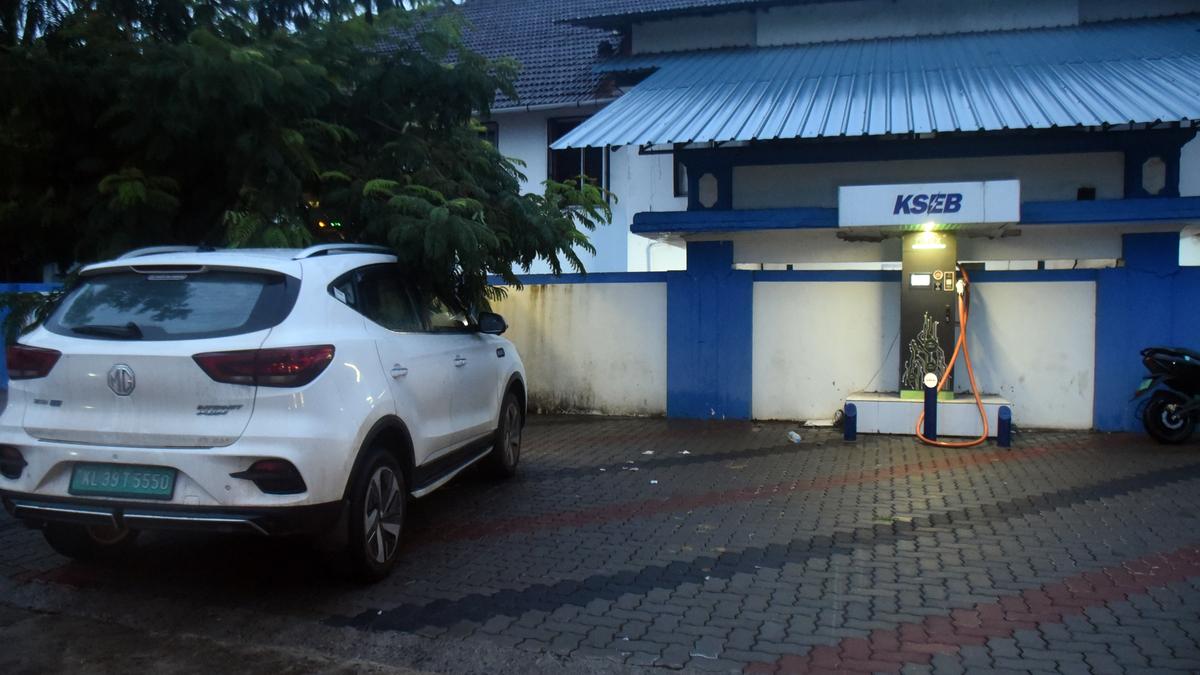Vehicle-to-Grid (V2G) Technology

- 18 Mar 2025
In News:
Vehicle-to-Grid (V2G) is an innovative energy solution that allows Electric Vehicles (EVs) to not only draw power from the grid (charging) but also send excess stored electricity back to the grid (discharging) when not in use. This bi-directional energy flow creates a unique opportunity to support grid stability, especially when renewable energy (RE) sources like solar and wind are intermittent. When connected via bi-directional chargers, EV batteries can act as decentralized storage systems, offering a potential solution to address the challenges posed by renewable energy integration and peak demand periods.
Global Adoption and Benefits of V2G
V2G technology has gained significant traction in developed EV markets like Europe and the U.S., where it is seen as a cost-effective solution for distributed energy storage.
- In the U.K. and the Netherlands, EV owners are compensated for supplying excess energy to the grid, particularly during peak hours.
- In California, EVs are integrated into the ancillary services market, helping improve grid reliability.
- Additionally, V2G technologies have shown promise in offering emergency power during natural disasters and grid failures, proving to be an essential tool for enhancing grid resilience.
V2G in India: Current Status and Challenges
In India, V2G technology is still in its nascent stages. While there is a growing adoption of EVs and charging infrastructure, integrating these vehicles into the national grid remains a challenge. The electricity market in India is not yet fully equipped to support decentralized energy solutions like V2G. The current grid structure, characterized by variable RE generation and mismatches in supply and demand, requires significant regulatory and structural changes for successful V2G integration.
The Kerala State Electricity Board (KSEB) and the Indian Institute of Technology Bombay (IIT Bombay) have launched a pilot V2G project to assess the feasibility of this technology in the state. This project will explore how EVs can help support grid demand during peak hours, particularly when solar energy generation is low, as Kerala experiences both rapid EV adoption and increasing rooftop solar installations.
Key Features of V2G
- Charging (G2V): When an EV is charged, it functions as a load on the grid. This process can be managed through Time of Use (ToU) electricity tariffs, which incentivize charging during off-peak hours to reduce grid stress.
- Discharging (V2G): When EV batteries discharge power back to the grid, they act as distributed energy resources. This is especially valuable during periods of high demand or when renewable energy generation is insufficient.
- Decentralized Energy Storage: V2G enables EVs to serve as decentralized storage units, reducing the dependency on centralized storage systems and making the grid more resilient and efficient.
Advantages for the Indian Power Sector
- Grid Stability: V2G can help modulate the power flow in the grid by reducing the impact of variable RE generation. It also helps to stabilize grid operations during peak demand periods.
- Support for Renewable Energy: By enabling EVs to store excess solar energy during the day, V2G can assist in using this stored power during nighttime or when renewable energy generation is low, contributing to true decarbonization.
- Smart Charging: Integrating V2G with smart charging systems can help optimize energy use, ensuring that EVs charge during periods of high renewable energy generation and discharge during peak demand.
Potential for Wider Adoption
The Kerala pilot project is expected to pave the way for broader V2G implementation across India. The project aims to test how EVs can provide support during peak demand, particularly when solar power generation is unavailable. The integration of smart charging solutions and V2G will help mitigate concerns about increasing electricity demand due to the growing number of EVs. Additionally, incentives for EV owners to participate in V2G systems can lead to cost-effective solutions for grid management.
The Indian government, through the Central Electricity Authority (CEA), has already initiated steps to frame guidelines for reverse charging (V2G). With the increasing adoption of EVs and solar power, V2G has the potential to become a cornerstone of India's energy future.
